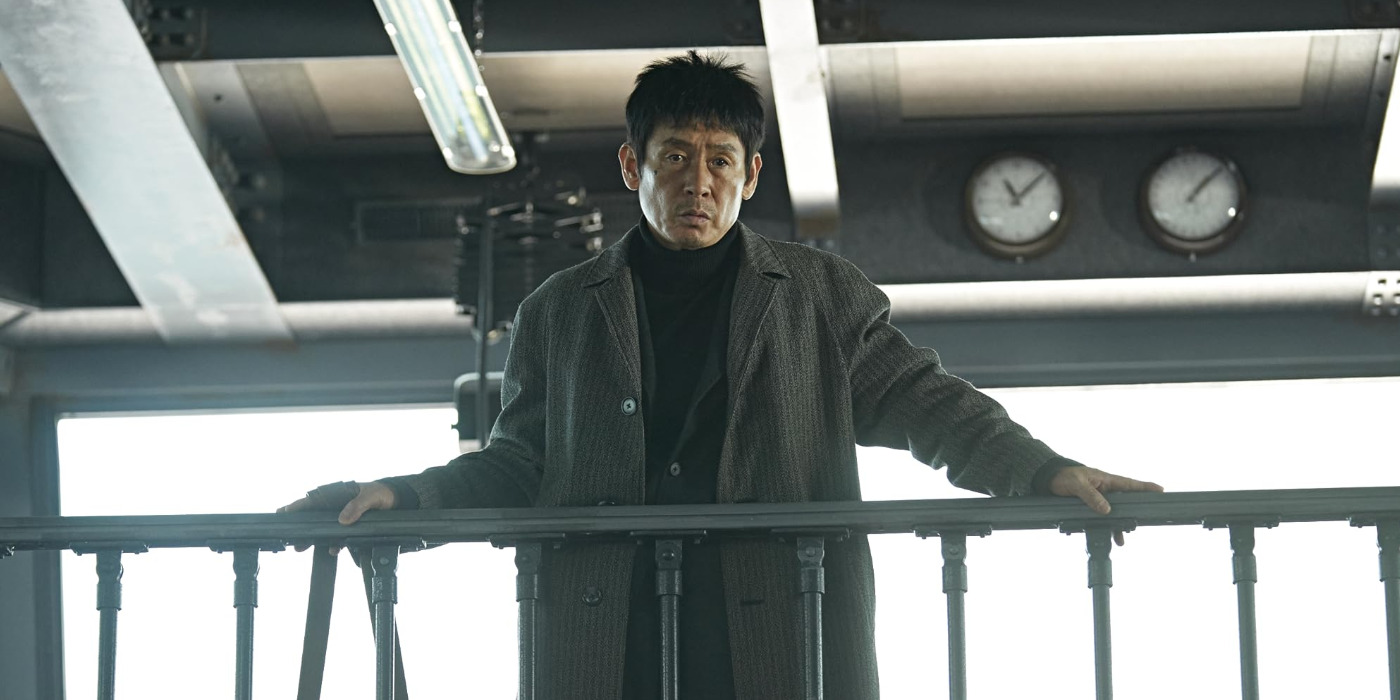‘Good News’ is a Korean dark comedy film that employs an intense premise paired with sharp, absurd humor that remains laced with relevant socio-political commentary. Set in 1970 Japan, the story centers around a bold aircraft hijacking carried out by a group of extremist communists of the Red Army Faction. The young revolutionaries, armed with weapons and mobilized resolve, have a single-minded focus on getting Japanese Ride 351 to land in North Korea’s Pyongyang International Airport. As a result, Park Sang-hyeon, the Director of South Korean Intelligence, decides to intervene in the matter to earn some cookie points for his department and country on an international platform. Thus, a problem fixer who lives in the shadows and is only known as Nobody enters the picture, saddled with the responsibility to solve an impossible problem. In the coming hours, the fixer and Seo Go-myung, an Air Force lieutenant backed into a corner, must find a way to outmanoeuvre the hijacker and save the lives of more than 100 innocent hostages. SPOILERS AHEAD!
Good News Plot Synopsis
On March 31, 1970, numerous Japanese citizens board a plane from the Haneda Airport, unaware of the danger they were inadvertently walking into. Among these passengers are a group of young extremists with katanas, guns, and a bomb in their carry-ons, who plan on overtaking control of the vessel once it’s in the air. As the lack of vigilant airport security allows these individuals to pass through, hours later, they hijack the aircraft as an act of armed revolution. However, once they instruct the Captain, Takahiro Kubo, to fly the vessel to Pyongyang, North Korea, the pilot reveals there’s no way to navigate the trip without a frequency from the country’s towers. Furthermore, he tries to buy some time for himself and the other hostages by lying to the group’s amateur Leader about a pressing need for refueling. As a result, the aircraft has to be landed at a different Japanese airport.
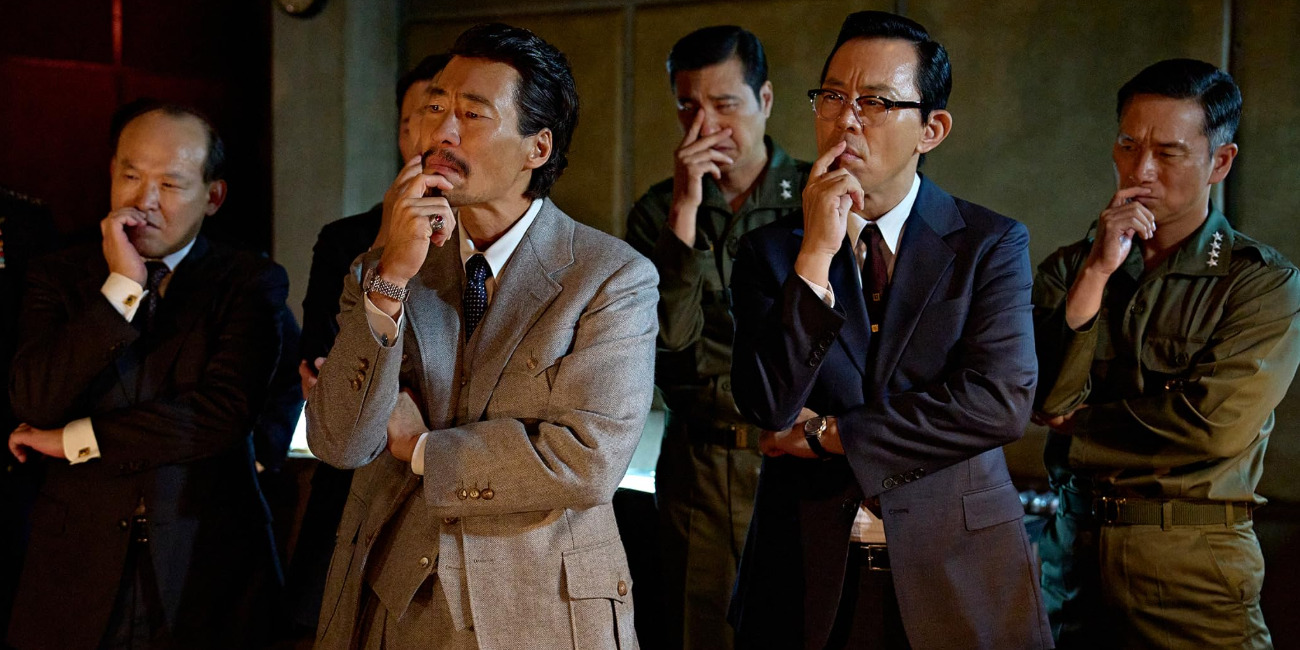
In order to ensure everything goes smoothly, the Leader announces that the group will blow up the entire vessel with their homemade bomb vest if the Japanese military or police interferes. As the incident becomes national news, military personnel and various ministers find themselves stumped and wholly unprepared to tackle the dangerous situation. One official tries out his brilliantly ridiculous plan of “double parking” the tarmac to prevent the hijacked aircraft from taking off again. In the end, they come up with no real solution and can only hand Kudo and his co-pilot, Maeda, a map of the Korean peninsula, before the plane has to take off again. Meanwhile, as the South Korean officials get news of the situation, the ROK Air Force Chief of Staff decides to stay out of the entire mess. However, KCIA director Park Sang-hyeon is eager to jump on the opportunity to have Japan indebted to Korea through a heroic rescue. Therefore, he contacts his handy problem fixer, Nobody, to find a way to negotiate with the hijackers while they fly over their country.
Consequently, Nobody corrals an Air Force lieutenant, Seo Go-myung, who is trained in the exceptional skill of airspace control. Although the latter remains reluctant to get involved in this shady and secretive operation, promises of heroism and acclaim sway the best of his judgment. The pressing fear of being branded a traitor and a commie by the KCIA also inspires him to take charge of the controls. Therefore, he comes up with an outlandish but workable plan of hijacking 351’s emergency communication line by pretending to be North Korea in an attempt to lure them into the Kimpo Airport. Surprisingly enough, the plan works, compelling Nobody to pull the strings to turn the place into a fake North Korean Airport with the help of a nearby film production set. Initially, the plan works as the hijackers, pilots, and passengers abroad 351 are all unable to confidently call Nobody out on his charade. Nonetheless, eventually, the hijackers manage to spot their deceit, leading to increased tensions.
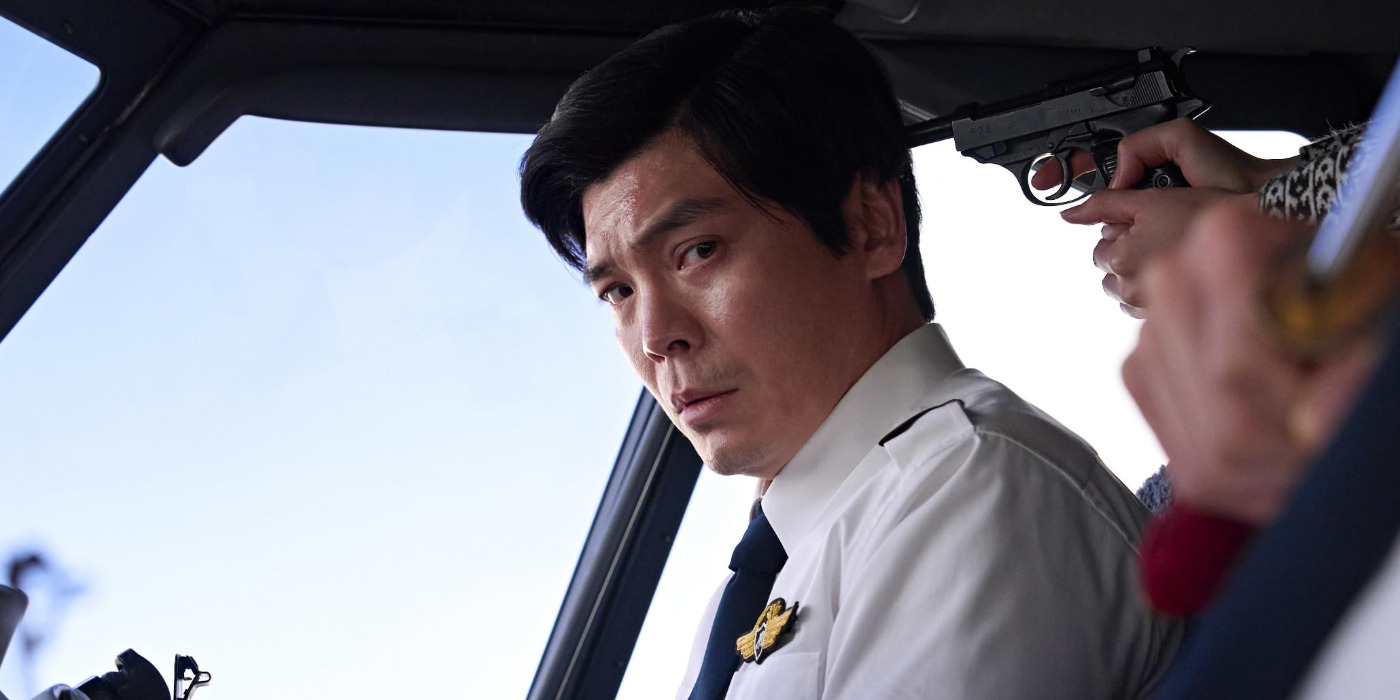
In the disastrous aftermath, the Leader of the hijackers demands a meeting aboard the vessel, a responsibility which Sang-hyeon expertly dumps on Seo’s shoulders. The soldier’s meeting with the hijackers proves to be unusual as they briefly bond over their shared love for the ‘Ajita No Joe’ manga, a comic book which is apparently a pillar of the terrorist group’s ideology. Furthermore, during the meeting, the Leader’s second-in-command stabs him as an overarching self-sacrificial ploy that puts a big ticking clock on the entire situation. As the entire plan unravels into chaos, Japanese officials fly out to the Kimpo Airport in an attempt to come up with a viable plan. Nonetheless, Sang-hyeon is all too eager to flee from the scene and save his own drowning reputation. By some miracle, aka Nobody’s elaborate, manipulative plan, they manage to save the lives of most of the hostages. Yet, in the end, a different price has to be paid in the currency of silence and secrecy.
Good News Ending: What Happens to Seo? What Does Nobody Give Him Before Leaving?
Despite the mounting odds against them, Nobody manages to orchestrate a scenario where all the right pieces fall into place, allowing a negotiation to take place that spares the lives of more than 100 passengers. As the disaster wraps up, Seo finally finds himself reaping the precarious fruits that he has been consistently promised since his recruitment into the operation. Part of the reason why the lieutenant had agreed to be a part of Nobody’s outlandish schemes stems from his longstanding desire for fame and recognition. While he had been concerned about the lives at stake, he also spent much of the time daydreaming about how the outcome of a heroic manoeuvre would impact his future. As such, he’s all too happy to participate in an official interview, detailing his involvement in the rescue mission, inevitably branding himself as an international hero. Unfortunately, his happiness is crushed just as swiftly as Nobody pays him a visit in the interview’s aftermath.
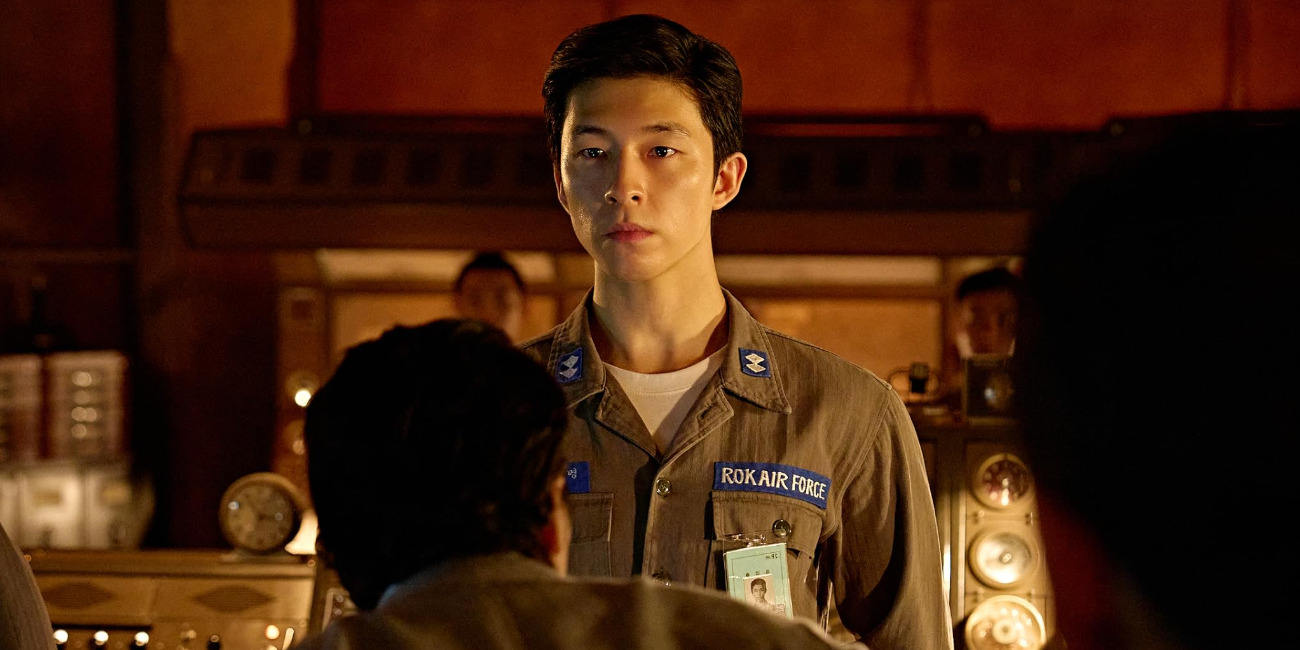
As it turns out, things regarding their operation aren’t as simple as Seo would perhaps like them to be. While the entire hijacking fiasco was unfolding, the President of South Korea remained indisposed due to an apparent hangover. Nobody reveals that this hangover was a result of a successful meeting with the President of the United States. The meeting had revealed that the latter country is in talks with the Soviet Union, opening up the possibility for a conversation to take place regarding the unification of Korea. This means that, at least officially, there can be no traces of South Korea’s direct involvement in the hijacking incident. In order to keep up appearances, they must pretend that the conflict was mostly a Japanese concern, with South Korea’s involvement remaining coincidental. The North would be compelled to play along with the story due to its own relations with the Soviet Union. Ultimately, international ploys and interests demand that the entire operation be buried and kept from public consciousness.
Naturally, this also means that Seo, the leading force who made the operation, must also be hidden away in the shadows. His burgeoning involvement in the scheme to intercept Flight 351 and facilitate the final negotiations simply cannot be revealed. As a result, his efforts will never be recognized on a national or international scale, and he will simply be written off from the official story. The news hits Seo like a freight train, and he can’t help but think that all the risks and near-misses he had with death in the past few hours have all been for nought. Even though the entire thing is unfair and insidious, Nobody has to remind him that his efforts saved hundreds of lives, which has to be enough on its own, even without recognition. The parting gift that he imparts on the young man, a blue velvet box, is a reminder of the same. Inside the box is a watch, identical to the one Seo’s father was given after he lost both of his legs in the War. Throughout the mission, the lieutenant has been dreaming of the medal his father was never afforded, despite the severity of the sacrifice he made for his country. In the end, he is robbed of this rightfully earned reward and only receives the same sorry compensation for his sacrifices.
Who is Nobody? Is He Really a Former North Korean Soldier?
Nobody plays an incredibly significant role in the story, as the man pulling the strings behind the scenes. Yet, his name is never revealed, and he’s usually referred to as “Nobody,” highlighting the unseen nature of his job. Everyone, from the hijackers, the ministers, Sang-hyeon, and even Seo, hopes to win some acknowledgement in exchange for their efforts. The same isn’t true for Nobody, who is bound to be forgotten by history and even the present. This plays into the socio-political themes of the film, which highlight the unfair nature of political bureaucracy. By pitching the lead protagonist as a Nobody, while the surrounding politicians and military officials remain bumbling idiots for the most part, the film provides commentary about the absurdity of national agendas and personal egos in the face of a crisis. Furthermore, his overlooked identity serves as foreshadowing for Seo’s inevitable fate, since he would also be relegated to the position of a “Nobody.”
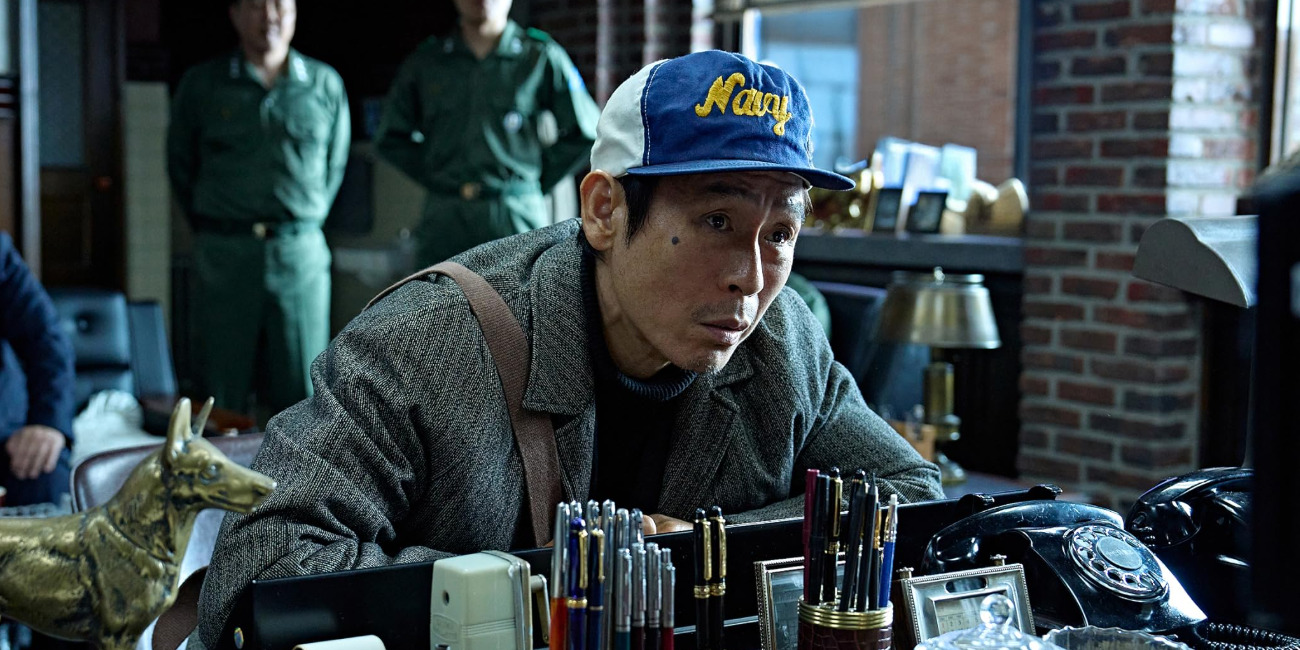
However, beyond the thematic nuances, Nobody’s unique identity notably plays into his in-universe characterization as well. Although people don’t know much about the man, rumors frequently follow him around, labeling him as a North Korean soldier who was captured in the aftermath of the war. As far as anyone can tell, he has no official residence card, which adds fuel to the rumors. Many believe that Sang-hyeon has been keeping him around without any means to strike out on his own to exploit his genius instincts at his own convenience. In the end, the theory receives much credence thanks to an interaction between the KCIA head and Nobody. The former finally hands the latter his residence card, presumably freeing him from the short leash Sang-hyeon kept him on. Interestingly enough, the name he chooses for this card is Choi Go-myung. The ambiguity around the scene leaves viewers with the unanswered question of whether that has always been Nobody’s real name to begin with, or if he settled on it to showcase the influence Seo had on the man.
Are the Passengers Saved? How?
Since the hijacking of Flight 351 remains at the center of the narrative, its resolution is bound to be a point of intrigue for many viewers. Once the aircraft lands in Kimpo Airport, it requires outside influence in order to take off once again. Therefore, Sang-hyeon convinces the other officials that they can negotiate for the lives of the hostages. He wants to offer the hijackers a deal wherein they would be allowed to fly away if they agreed to release all the hostages, save for the pilots. The prominent pitfall of this plan remains the lack of official backing from the country’s President. In its absence, many of the ministers and other Korean officials refuse to allow for the aircraft’s exit, knowing it will be headed for North Korea.
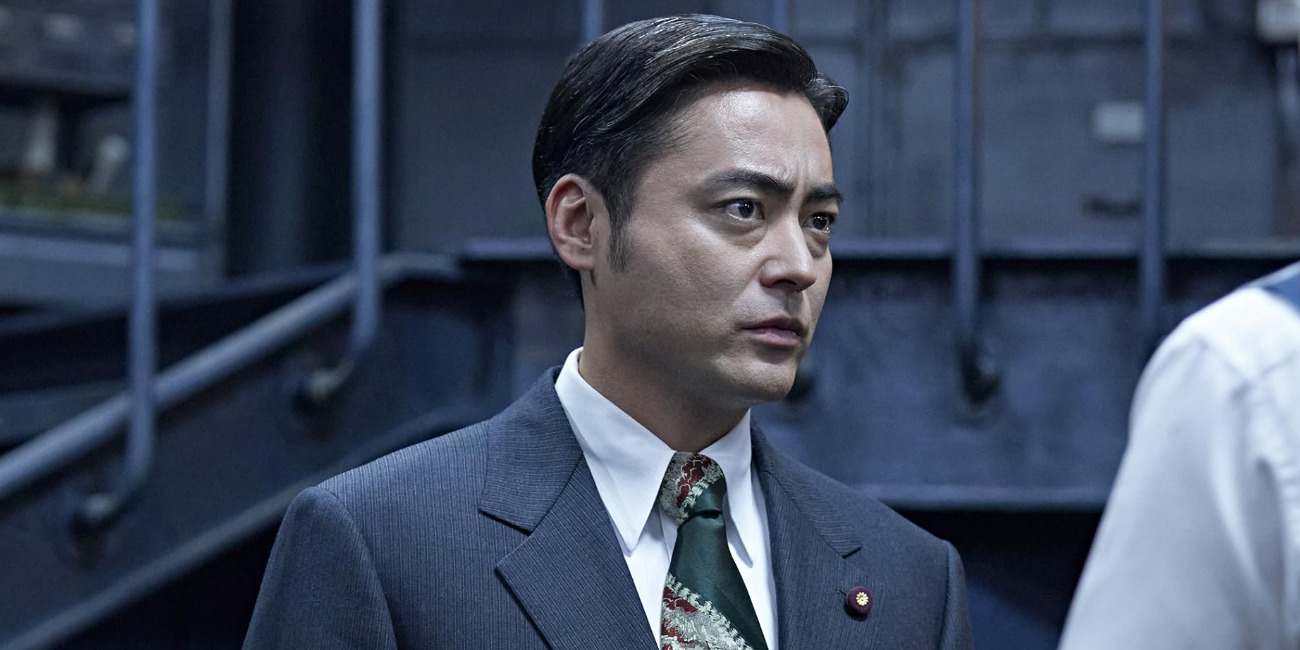
Consequently, in order to sway the national implications of inaction, Nobody concots a plan. He uses the power of media manipulation to make it seem like one South Korean citizen is aboard Flight 351. Afterward, some strategic callbacks to a recent hijacking event wherein South Korean hostages were taken to the North for torture and worse, help him fuel the public’s outrage over the current events. Therefore, the President has no choice but to send his wife as a representative to greenlight the brewing plan. Yet, even this fails as the hijackers refuse to comply with the deal, insisting Seo and the others cannot be trusted. In turn, they stay firm on their threat of blowing up the entire plane if they aren’t allowed to leave before a deadline or before the Leader’s inevitable death via the stab wound.
Still, even as the chaos continues to unfold, Nobody refuses to give up. He comes up with a different, equally manipulative plan. First, he convinces Sang-hyeon that if this incident blows up in everyone’s faces, he will be the one to blame. As a result, the NCIA head eagerly leaves the premises, leaving Seo in charge. This compels the Japanese Transport Minister, Shinichi Ishida, to become distraught as it becomes more and more clear how doomed the situation was. On the other hand, Seo, who had met the hijackers first-hand, knows about the manic obsession that instills a haunting belief in him that they will follow through with their mass suicide plan. Therefore, as the minutes tick closer for the bomb to be set off, he runs off into the tarmac, raw with emotions, trying to convince the hijackers against the merits of self-sacrificing. This stirring image inspires Ishida to take action on his own. In the end, he ends up offering himself as a hostage in exchange for the lives of the other passengers.
Would the Terrorists Have Really Blown Up the Plane? What was Their Plan B?
Despite the antagonistic role fulfilled by the hijackers in the story, the narrative takes many efforts to showcase the absurdity of their situation. The group is mostly made up of young individuals, with one of them even appearing to be a teenager. Even though they claim to be a part of a known violent extremist group, the Red Army Faction, the pillars of their own ideology are based on a manga. Their core political inspiration remains a fictional boxer who dies at the end of his story. Therefore, it’s impossible not to doubt the legitimacy of their actions and proclamations. Even though they believe in an armed revolution, the goal of their demonstration isn’t violence.
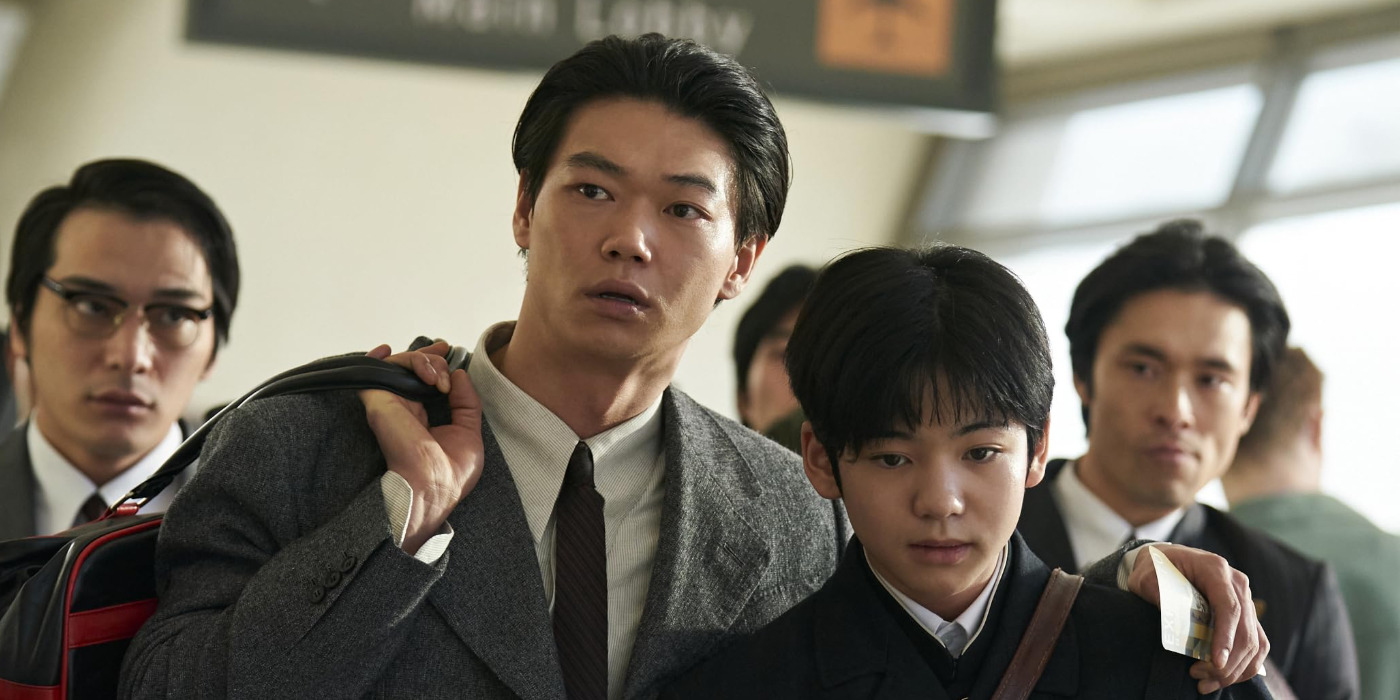
As such, one can’t help but wonder if they would have truly rationalized the reality of a mass murder through the detonation of their bomb. In the end, Nobody and other officials get a direct answer about this uncertainty. As it turns out, all the weapons, including the homemade bomb, that the hijackers brandished were fake, with no real ability to kill anyone. Once in North Korea, the Leader revealed they were never going to kill anyone and instead had a joint pact to commit mass suicide using their singular katana as a Plan B if all else failed. Somehow, despite the absurdity of their plan, everything had worked out in their favor. Yet, their stay in North Korea may not be as idyllic as they had imagined. Ultimately, while the hijackers stay back in the country, the pilots and Ishida are allowed to return to Japan.
Read More: Where Was Netflix’s Good News Filmed?

